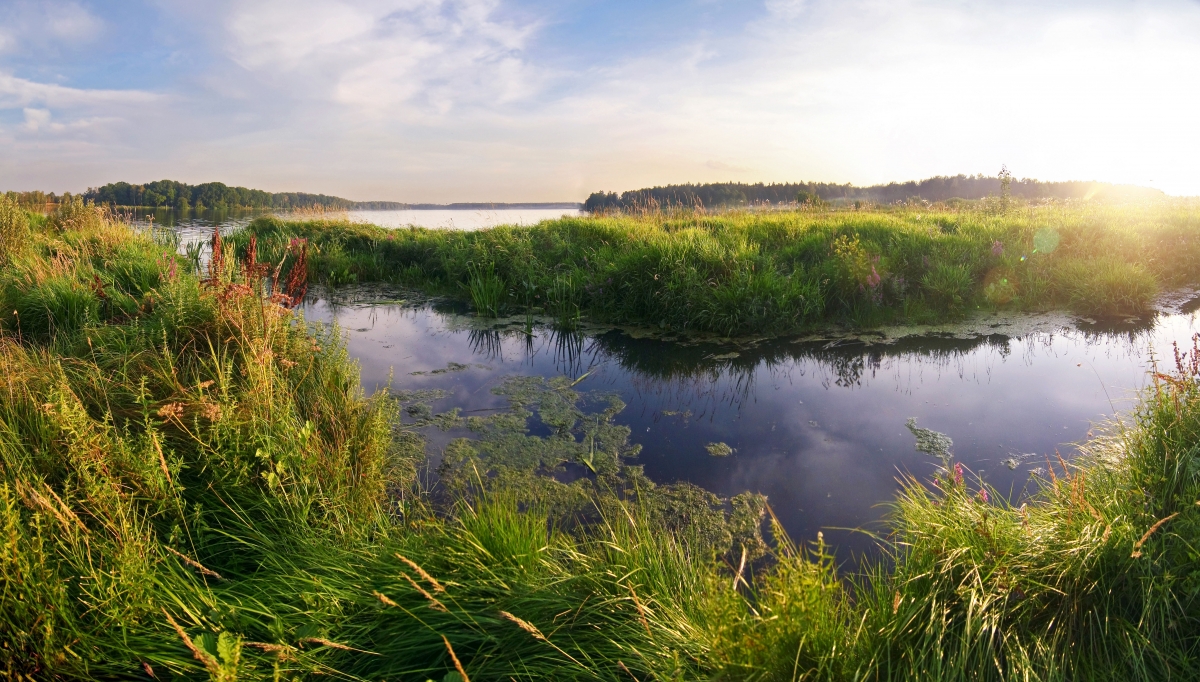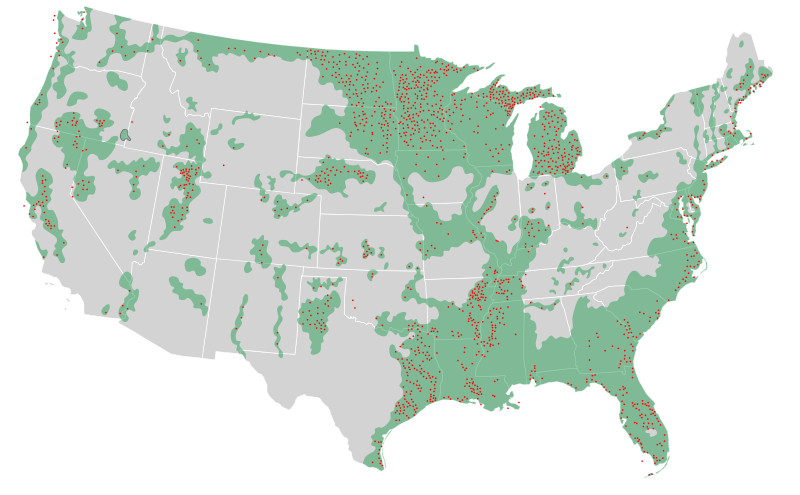Climate change presents immense challenges to coastal communities and to ecosystems affected by sea-level rise, salt water intrusion, changes in average temperature, storm frequency, and species composition. Existing wetland complexes are among the “natural and nature-based features” that currently buffer human communities from catastrophic storm events and that help ecosystems rebound from major stresses and impacts.
However, given the reality of climate change, these existing wetland complexes may be completely submerged by rising seas or lost to climate-influenced storm surges within a few decades. Thus, it is important to know which wetlands deserve attention, and intervention, by governmental decisionmakers in order to preserve or extend their climate risk reduction functions for a few more decades. It is likewise important to understand which lands can serve these important functions in the future if, and when, current wetlands are submerged by rising seas and tides. Specifically, where can tomorrow’s protective wetlands be located, and how can their geographic migration and effective establishment be supported over a rapid-enough time frame?
 |
The five states of the coastal Mid-Atlantic region (Delaware, Maryland, New Jersey, New York, and Virginia) joined forces in 2009 to form the Mid-Atlantic Regional Council on the Ocean (MARCO). One of MARCO’s key areas of focus is preparing for adaptation to climate changes that will threaten many of the region’s coastal cities, ports, beaches, roads, water systems, parks, and natural areas. These climate impacts will affect not only the region’s ocean-front communities, but also tidally influenced regions of the Hudson River, Delaware River, and the Chesapeake Bay’s tributaries, as well as inland regions affected by changes in species composition, temperature gradient, and storm intensity and frequency. The predicted impacts are quite large over the remainder of the 21st century, with anticipated sea-level rises of a meter and a half or more. But the science enabling officials to identify and protect critical adaptation areas is also quite robust and rapidly developing.
MARCO asked the Environmental Law Institute (ELI) to examine the current state of making priority-setting decisions about which wetlands to focus on for conservation and restoration, with the goal of establishing a framework for making consistent decisions across the region. This kind of consistency will be important if the member states and their federal and nongovernmental partners are to achieve better communication with the public and elected officials. It is also needed for the region to pursue what will necessarily be very long-term conservation activities with greater efficiency and effectiveness. ELI and MARCO released the proposed framework in January 2017: Developing Wetland Restoration Priorities for Climate Risk Reduction and Resilience in the MARCO Region.
Given the huge number of ongoing science and priority-setting activities going on in the region (cataloged and hyperlinked in the report), the proposed framework suggests a process approach to allow for continuous improvement over time. It recommends a focus on three key elements:
- increasingly clearer statements of state policies about what wetland and climate objectives are being pursued;
- a priority-setting system that generates reproducible outcomes; and
- development of data visualization tools that communicate the priorities and decisions.
These elements can be integrated into each state resource planning instrument (for wetlands, wildlife, open space, forests, etc.) as each plan is updated, thus allowing for continuous improvement and integration into functional programs.
Policies can focus on conservation and restoration of natural features in place, identification and planning for marsh migration corridors, requirements for “living shoreline” treatments of areas subject to erosion, siting and design criteria for coastal infrastructure including provision for natural system functions, and maintaining habitat diversity and resilience.
 |
Some key models that can be readily adapted include Maryland’s coastal resilience wetland targeting strategy created in 2012 and integrated into the state’s multi-purpose GreenPrint database. This strategy assigned scores to nine objectives and aggregated the scores to determine the rank of wetland and wetland migration areas most desirable for conservation for climate resilience purposes. The high- and medium-priority areas were mapped onto Maryland’s statewide mapping database as “Wetland Adaptation Areas,” and are considered in land acquisition decisions and in Maryland’s climate change scorecard affecting conservation purchases. More recently, Maryland’s Department of Natural Resources (MDNR) with The Nature Conservancy developed a screening approach to identify those existing wetlands that are likely providing key risk reduction benefits to human communities. MDNR is now working on a statewide resilience master plan to determine how much risk reduction and resilience wetlands, coastal forests, submerged aquatic vegetation can provide, and over what period of time.
Many other targeting tools are available throughout the region, including a suite of visualization and decision support tools created by The Nature Conservancy. Virginia’s Institute of Marine Science has created tools to assist Virginia coastal counties visualize their choices in making decisions about coastal resilience. New York’s Coastal Risk Areas data can be used with other information on wetlands to identify priorities for conservation.
Perhaps, the most important lessons from ELI’s work are the need to work within existing systems toward greater harmonization and continuous improvement and the critical need for data visualization as a support to the development and implementation of these long-term policy decisions.
To read ELI’s full report, click here. For more information, also view ELI’s recent webinar presentation.
